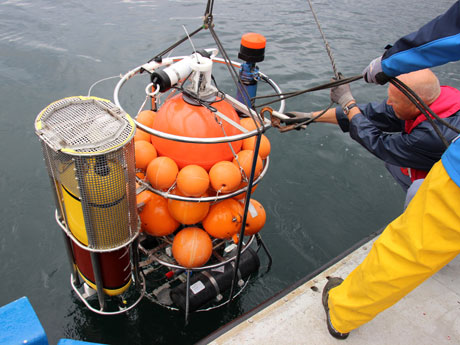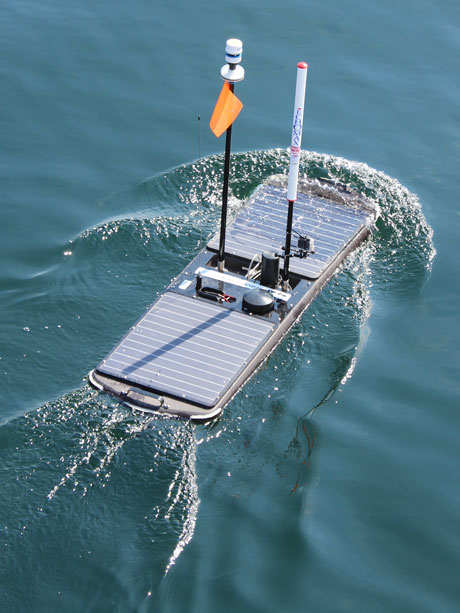Ocean warming, acidification and deoxygenation – human impact on the marine environment is steadily growing. Significant responses in marine biogeochemical cycles and ecosystems are to be expected. The need to better observe the ocean in order to detect the often subtle responses is a huge challenge to oceanographers. New approaches are therefore needed. Despite their importance, classical methods of oceanography do not allow observations with the necessary coverage in space and time. One answer to this old problem of undersampling are autonomous observation systems for a wide range of physical, chemical and biological properties of the surface and interior ocean. Long-term moorings, Argo floats and gliders are prominent examples of such autonomous platforms which are increasingly employed for biogeochemical measurements.
This field course is lead by Prof. Arne Körtzinger from the GEOMAR Helmholtz Centre for Ocean Research in Kiel, Germany. The main purpose is the field testing of state-of-art autonomous observation equipment. This includes a moored submersible winch-based profiling system, a wave glider and a towed video profiler as well as of novel gas sensors for oxygen and carbon dioxide. The moored profiler was successfully deployed from R/V Nereus on Sept. 2 and was profiling the upper 140 m of the water column every 2 hours for 3 days. A second deployment round took place one week later. The wave glider – a fully autonomous robotic instrument using wave and solar energy and capable of doing year-long full ocean surveys with a sophisticated sensor package – was deployed for the first time on Sept. 5, following by a longer second deployment. The towed video also has seen several successful field deployments.

Deployment of the submersible winch system from R/V Nereus with the profiler still in its deployment cage (left). After deployment at 140 m depth the profiler was released and winched autonomously to the surface every 2 hours for a vertical multi-parameter profile. Communication is provided through an Iridium telemetry buoy as well as an underwater acoustic link.
– The conditions provided by the Lovén Centre Tjärnö are unique and excellent, says Dr. Björn Fiedler from GEOMAR, who is organizing the field course. We especially appreciate well equipped facilities and experienced staff. We are also grateful to local commercial fishermen who avoid trawling where the equipment is deployed.
During the second week of the experiment an international field course is carried out. Seven students (mostly Ph.D. students) from Sweden, Norway, Cape Verde and Germany get hands-on experience – both onshore and at sea – with the technology and the data collected in Kosterfjord off the Lovén Centre. A series of lectures and data handling instructions given by GEOMAR and University of Gothenburg teachers rounds off the 5-day course. Afterwards all instruments will be recovered.
 Surface float of the wave glider system containing the sensor package, the command and control unit, communications, weather station, solar panels etc. The sub connected through a 7-m tether harvests surface wave energy to provide propulsion at speeds of up to 2 knots. The instrument is remotely navigated at sea and from shore using Iridium, radio and Internet communications systems.
Surface float of the wave glider system containing the sensor package, the command and control unit, communications, weather station, solar panels etc. The sub connected through a 7-m tether harvests surface wave energy to provide propulsion at speeds of up to 2 knots. The instrument is remotely navigated at sea and from shore using Iridium, radio and Internet communications systems.

 Surface float of the wave glider system containing the sensor package, the command and control unit, communications, weather station, solar panels etc. The sub connected through a 7-m tether harvests surface wave energy to provide propulsion at speeds of up to 2 knots. The instrument is remotely navigated at sea and from shore using Iridium, radio and Internet communications systems.
Surface float of the wave glider system containing the sensor package, the command and control unit, communications, weather station, solar panels etc. The sub connected through a 7-m tether harvests surface wave energy to provide propulsion at speeds of up to 2 knots. The instrument is remotely navigated at sea and from shore using Iridium, radio and Internet communications systems.